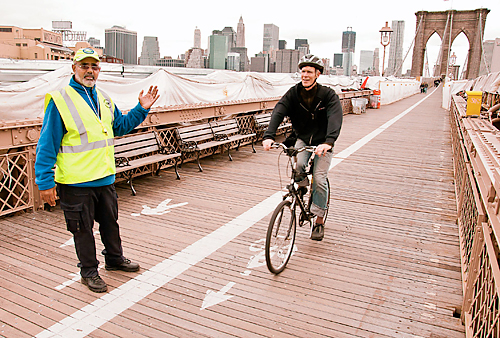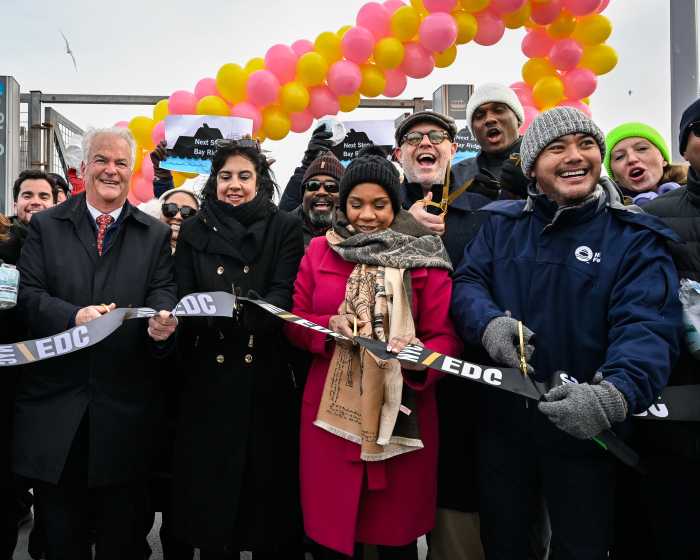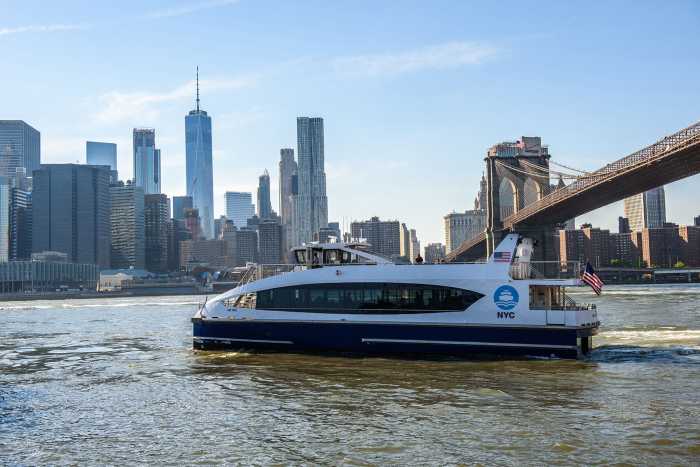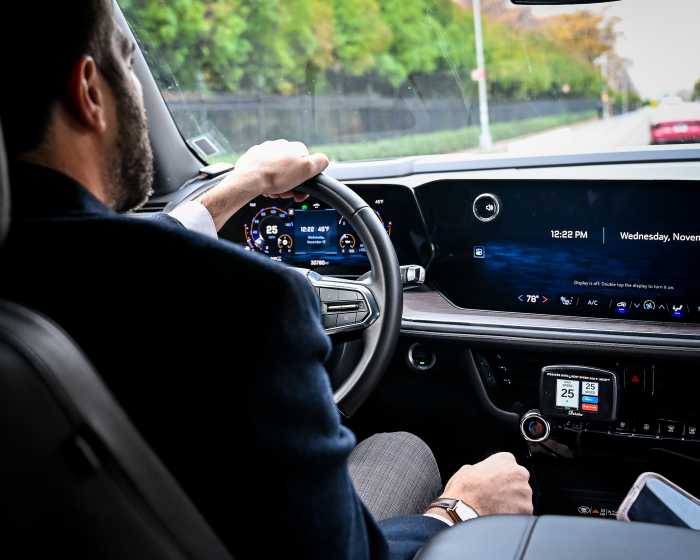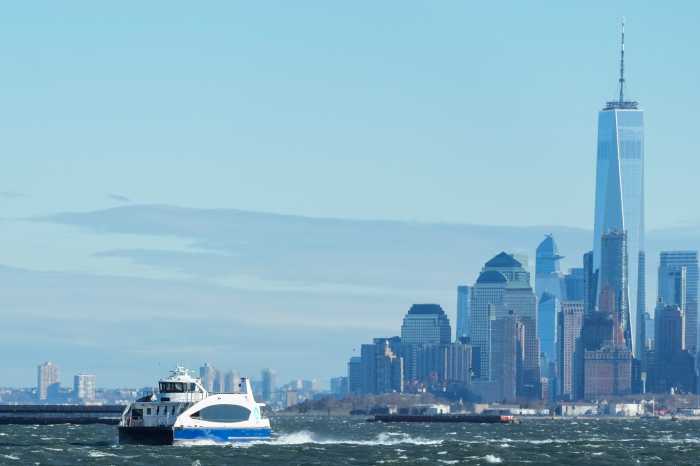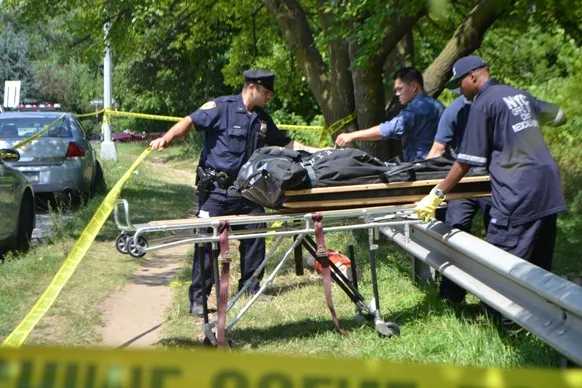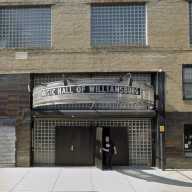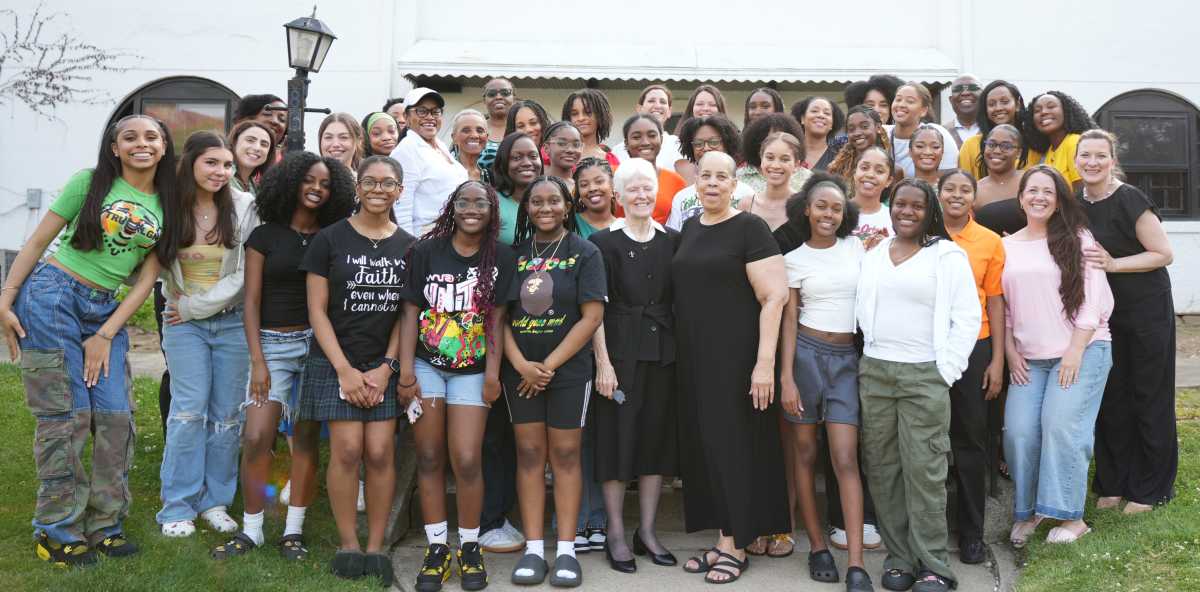Call them the whistleblowers!
The city has brought in traffic enforcement agents to ease tension on the congested Brooklyn Bridge footpath — where clashes between cyclists and skyscraper-gawking tourists are frequent.
Armed with whistles, yellow reflective vests and hats, the bridge’s watchdogs don’t hand out tickets or chase down offenders. All they do is upbraid people to stay in their respective lanes.
Is it working? Of course not; halfway into the city’s 10-week safety program, both sides still aren’t playing nice.
“I almost hit 10 people,” said cyclist Christina Cautillo, 24. “I was ringing my bell and nothing happened. The officer and the tourists just stand in the way.”
Pedestrians are equally unimpressed.
Jennifer Weiss, 40, of Manhattan, pushed her stroller and was nearly knocked down by a speeding cyclist.
“The officers tell them to slow down,” she said, “but I’m not sure it’s the best solution.”
It’s certainly good money for Sam Schwartz Engineering, the outside consulting company whose namesake was the city’s Transportation Commissioner from 1982 to 1986 before trading on that expertise to begin a lucrative career as a traffic consultant who has worked on such projects as the Red Hook IKEA, Brooklyn Bridge Park and Bruce Ratner’s Barclays Center.
Now, the city is paying Schwartz’s team $80,000 a month, or roughly $38 per hour, for the safety cops — stationed on the Brooklyn, Manhattan and Williamsburg bridges. The patrols are an extension of an existing contract between Schwartz’s company and the city that covers construction supervision on all the three bridges.
The job on the Brooklyn Bridge could defy all of Schwartz’s costly expertise, given the tight confines and diverse population that uses the footpath.
Two officers at opposite ends of the bridge stand in the center to warn pedestrians that cyclists are coming through. The guards work an entire shift, from 7 am to 7 pm on weekdays and noon to 5 pm on Saturday.
Safety cop Porfirio Llanes said it’s not always easy, even for a retired Corrections officer like himself.
He blows his whistle whenever cyclists whiz by and camera-toting amblers stop to snap photos. Sometimes they don’t recognize his authority and ask him for directions.
“Every day we have to tell people to stay in their lanes,” he said. “They get an attitude, but it’s for their safety!”
The watchdogs often get in the way, too. The path is narrow, especially in some areas where construction has reduced the width by more than a foot.
Even during off-peak hours, the problems continued. Cyclists were yelling, “Bike lane!” at a clogged section of the bridge, where walkers dipped into their path to get around a peddler selling tourist trinkets.
But Llanes put the disarray in some context:
“Since I’ve been out here, there haven’t been any accidents,” he said. “Yet.”
The pilot program ends on Nov. 26.



